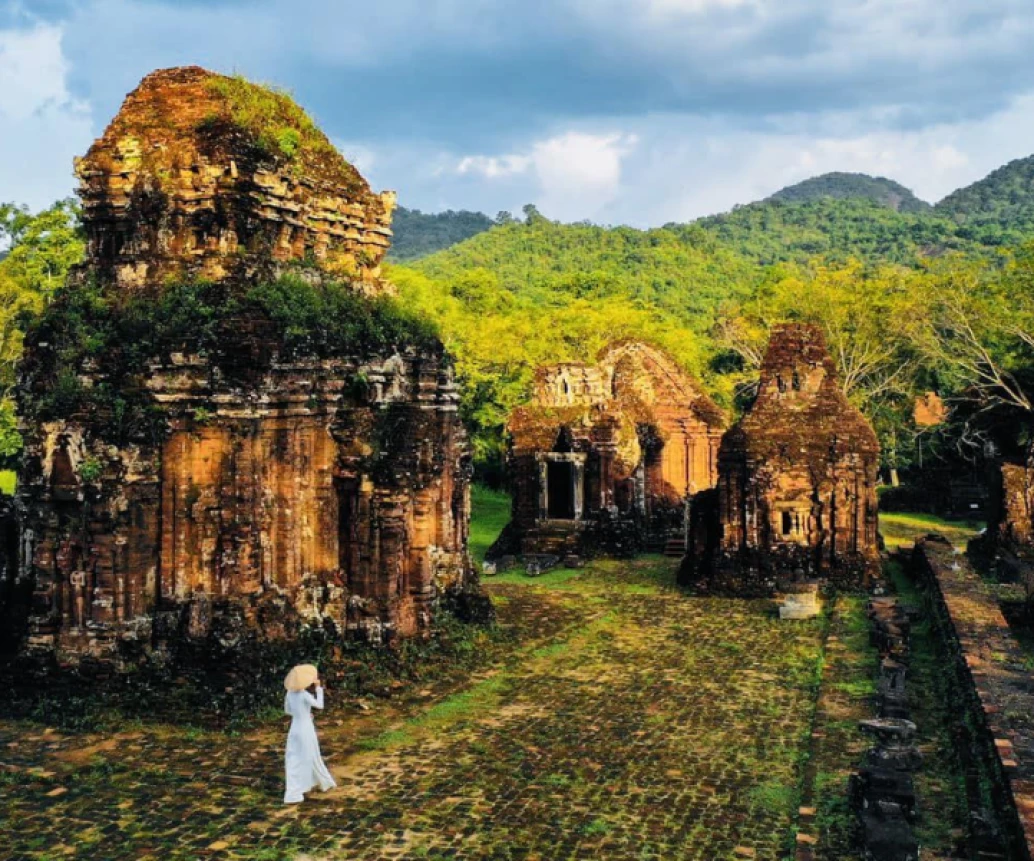
Uncover The Stories Of Central Vietnam: Best Historical Tour Destinations
Content []
Table of Contents
1. Overview of Central Vietnam’s History and Culture
Central Vietnam is not only a land rich in culture and traditions but also a region marked by many heroic chapters in the nation’s history, especially related to wars. Its unique geographical location, stretching along a narrow coastal strip, made it a crucial battleground where fierce and decisive conflicts took place to defend the country from foreign invasions.
From the feudal era, Central Vietnam witnessed numerous internal wars among dynasties and feudal factions, leaving deep historical imprints such as the battles between the Tran Dynasty and Champa, as well as conflicts during the period of North-South division, with many famous battles fought on this land.
Most notably in the 20th century, Central Vietnam became a hotspot during the resistance wars against French colonial forces and American imperialists. Places like Quang Tri, Hue, and Quang Nam were not only fierce battlefields but also symbols of the indomitable spirit of the Vietnamese people. Historical sites such as the Quang Tri Citadel, Khe Sanh Historical Relic, and the Hien Luong Bridge over the Ben Hai River bear powerful stories of war, standing as living testaments to the sacrifices and bravery of soldiers and civilians alike.
Beyond preserving the remnants of these heroic battles, Central Vietnam also maintains unique cultural values shaped amid wartime conditions. From commemorative festivals for martyrs, war memorials, to family and community traditions tied to the history of struggle, all contribute to a vivid and authentic historical picture.
Therefore, Central Vietnam historical tours offer visitors not only the chance to explore majestic natural landscapes but also to deeply understand the wartime legacies and the resilient spirit of the people who fought relentlessly for the country’s independence and freedom.
2. Prominent Cultural and Historical Destinations in Central Vietnam
2.1. The Imperial City of Hue – A World Cultural Heritage
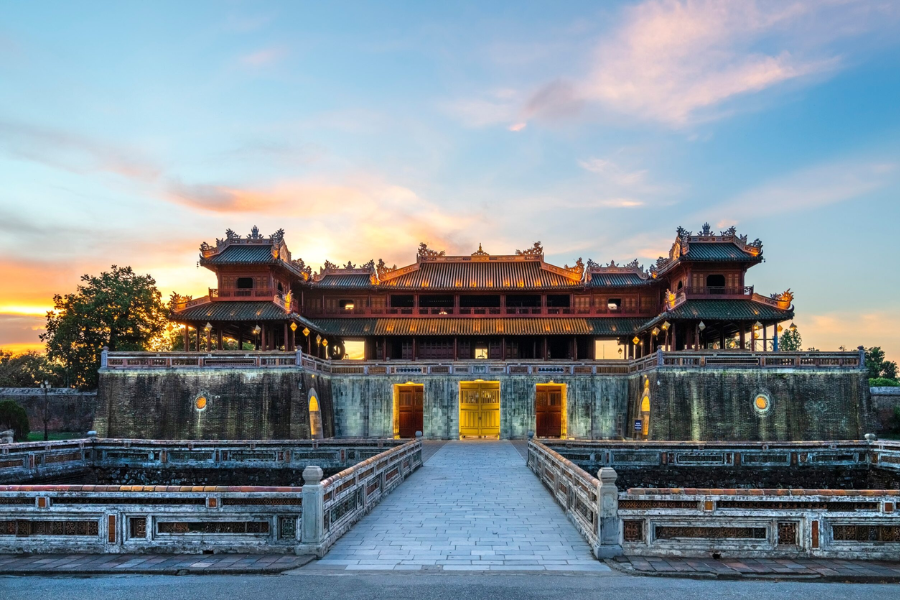
Hue, the last capital of the Nguyen dynasty, is recognized by UNESCO as a World Cultural Heritage site due to its unique historical, architectural, and cultural values.
The Hue Imperial Citadel: The political and cultural center of the Nguyen dynasty, featuring palaces and temples that embody the distinctive royal architectural style and contain many historical stories about Vietnam’s last feudal dynasty.
The Nguyen Dynasty Mausoleums: Highlighted by the tombs of Minh Mang, Tu Duc, and Khai Dinh, these are not only the resting places of the kings but also artistic architectural works that blend traditional styles with Western influences, reflecting the cultural and historical fusion.
Thien Mu Pagoda: A spiritual symbol located by the scenic Perfume River, associated with many historical events, especially during the Vietnam War.
2.2. Quang Tri - A Land of Wartime History
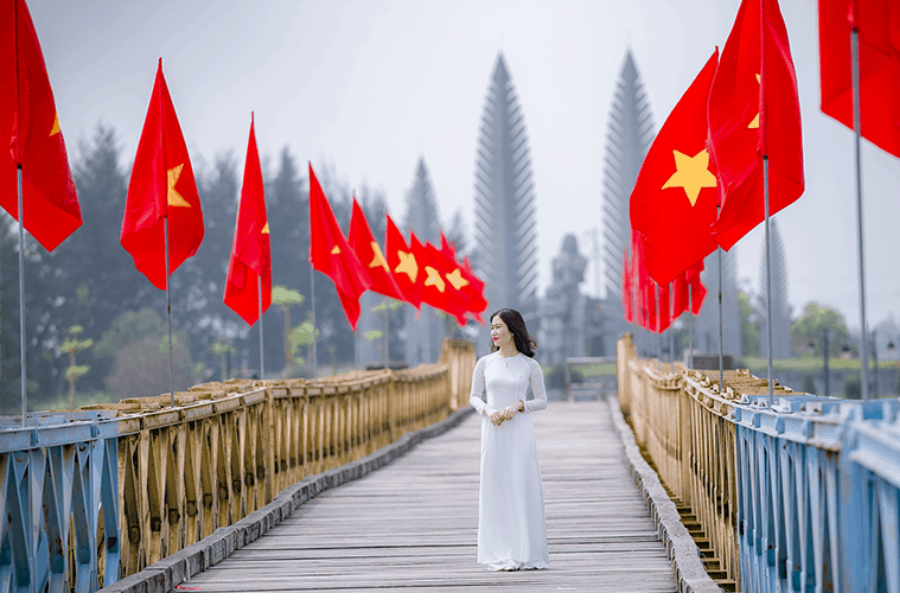
Quang Tri was one of the most vital and fierce battlefields during the resistance war, with many war relics still preserved intact.
Hien Luong Bridge – Ben Hai River: Located on the Ben Hai River, Hien Luong Bridge was once the demarcation line that divided North and South Vietnam for nearly 20 years during the country's partition. More than just a bridge, it became a poignant symbol of separation and the longing for reunification. Today, the bridge and river stand as sacred emblems of national solidarity, peace, and the unyielding desire for unity.
Vinh Moc Tunnels: This is one of Vietnam’s most solid and extensive tunnel systems, constructed more than 20 meters underground with a total length of over 2 kilometers. Built by local residents to escape relentless bombings and maintain daily life during the escalating war, the tunnels are a powerful testament to the creativity, determination, and collective strength of the people of Quang Tri in safeguarding the home front and supporting the battlefield.
Truong Son National Cemetery: The final resting place of more than 10,000 heroic martyrs who perished along the legendary Ho Chi Minh Trail. As the largest war cemetery in Vietnam, it is not only a site of profound tribute to the nation's finest sons and daughters but also a sacred destination that recalls a time of heroic sacrifice and national pride.
Quang Tri Ancient Citadel: This citadel is a historic witness to the brutal 81-day siege in 1972. It saw the sacrifice of thousands of soldiers defending every inch of ground, every brick of the wall. Though only ruins remain, Quang Tri Citadel today still radiates a sacred atmosphere—symbolizing patriotism, resilience, and the indomitable spirit of Vietnam’s armed forces and people.
Hill A1 (Hill 241): A strategically vital high point during the fiery summer offensive of 1972, Hill A1 was the scene of intense clashes between liberation forces and the U.S.–South Vietnamese troops. Despite being under relentless bombardment, Vietnamese soldiers held their ground with unwavering courage and fought to the end, achieving resounding victories.
Khe Sanh Combat Base: Located in western Quang Tri, Khe Sanh was a major U.S. military base in the 1960s. The Battle of Khe Sanh in 1968 was one of the fiercest and most iconic engagements of the Vietnam War. Today, the site remains preserved with many original features and reconstructions, welcoming visitors seeking to understand and remember this dramatic chapter of history.
Cua Viet Military Base Site: As a key logistics hub in the Quang Tri battlefield, Cua Viet played a crucial role in receiving and transporting weapons, ammunition, and supplies to the front lines. Remnants such as docks, bunkers, and shelters still evoke the strategic significance of this location during wartime.
2.3. Quang Binh - Gateway to Nature and History
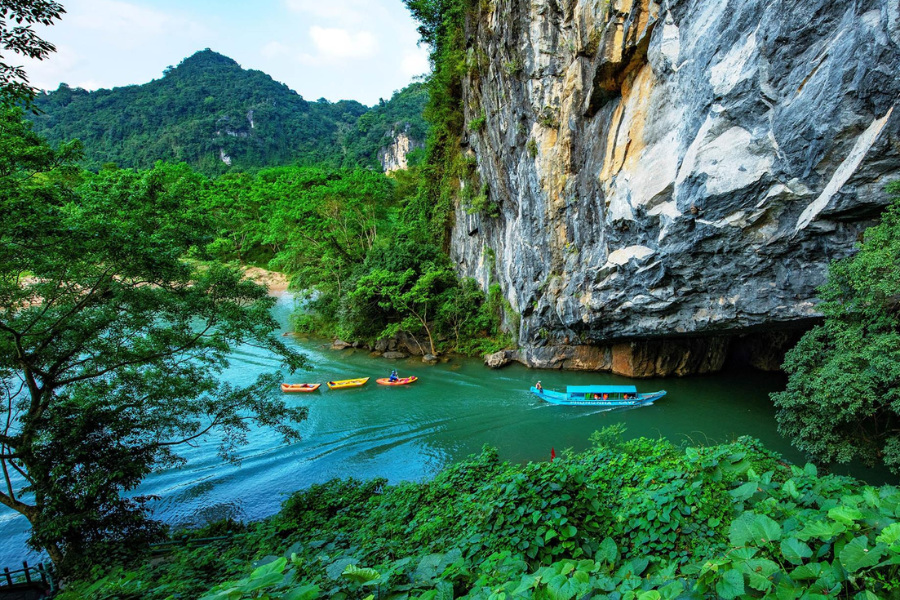
Quang Binh is renowned for its majestic natural landscapes and important wartime historical relics.
Phong Nha – Ke Bang National Park: A UNESCO World Natural Heritage Site, this park features a vast limestone cave system and once served as a strategic base during the Vietnam War.
Ho Chi Minh Trail Historical Site: A vital transportation route passing through Quang Binh during the resistance against the United States, now preserved as a testament to the resilience of the Vietnamese people.
Doc Mieu Revolutionary Base Relic: An important base for revolutionary forces during the wars against both the French and the Americans, preserving traces of military activities and daily life of the soldiers.
Phu Tho Tunnels (Quang Nam): An underground tunnel system used for guerrilla warfare and defense, showcasing remnants of soldiers’ life and combat operations.
2.4. Hoi An City – Heritage of an Ancient Port

Hoi An was once a bustling international trading port, characterized by the cultural blending of Vietnamese, Japanese, Chinese, and Western influences.
Hoi An Ancient Town: A preserved old town with traditional houses, narrow streets, and a historic atmosphere that allows visitors to envision the life of a trading port from centuries past.
Ancient Houses and Temples: Landmarks such as Tan Ky Ancient House, Phung Hung House, and the Japanese Covered Bridge serve not only as attractions but also as evidence of rich cultural and religious diversity.
Hoi An Museum of History and Culture: Home to valuable artifacts that illuminate the history of Hoi An as a maritime trading hub and its role in the maritime silk road and Southeast Asian trade history.
2.5. Da Nang - A Modern City with Historical Imprints
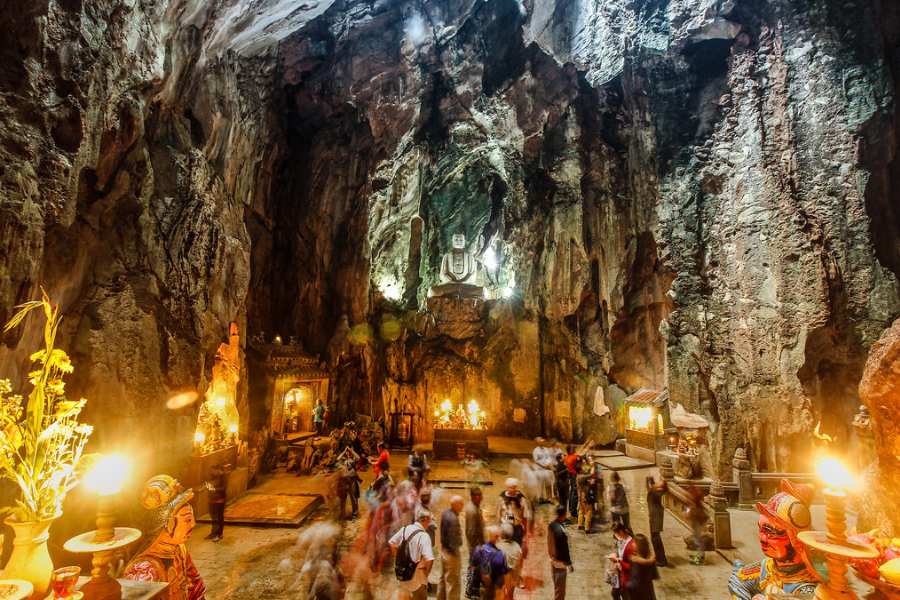
While being a dynamic modern city, Da Nang still preserves numerous important historical and cultural sites
Museum of Cham Sculpture: Displays over 3,000 artifacts from the ancient Champa civilization, offering deep insights into the region’s history, art, and religion.
Marble Mountains (Ngu Hanh Son): A cluster of limestone hills with caves and ancient temples, closely associated with local folklore and spiritual traditions.
Quang Da War Shelter Relic: A network of wartime shelters and fortifications that reflect the defense strategies and resilience of Da Nang’s military and civilians during wartime.
3. Suggested Itinerary for Central Vietnam Historical Tour
Suggestion 1: Da Nang - Hue - Quang Tri - Quang Binh 6 days 5 nights
Day 1: Da Nang - Hue
Visit the Imperial City of Hue (Hue Citadel)
Explore the Nguyen Dynasty Mausoleums: Minh Mang, Tu Duc, Khai Dinh
Stop by Thien Mu Pagoda by the Perfume River
Day 2: Hue - Quang Tri
Visit Quang Tri Ancient Citadel (site of the 1972 battle)
Explore Truong Son National Cemetery (largest war cemetery)
Walk across Hien Luong Bridge over Ben Hai River (former North-South division line)
Day 3: Quang Tri – Khe Sanh – Vinh Moc
Explore the Vinh Moc Tunnels, used by locals during bombings
Visit Khe Sanh Combat Base, famous battlefield in the Vietnam War
Drive along parts of the Ho Chi Minh Trail historical route
Day 4: Quang Binh - Phong Nha - Da Nang
Visit Phong Nha – Ke Bang National Park – UNESCO Natural World Heritage Site and wartime base
Visit Ho Chi Minh Trail Museum / Doc Mieu Revolutionary Base
Transfer back to Da Nang
Evening: Free time to explore Da Nang cuisine and city life
Day 5: Da Nang - Hoi An
Visit Cham Sculpture Museum in Da Nang
Explore Marble Mountain
Transfer to Hoi An Ancient Town
Visit historic sites: Japanese Covered Bridge, Old Houses, Assembly Halls
Day 6: Hoi An - End of Tour
Free time for sightseeing and shopping in Hoi An
Transfer to Da Nang Airport, end of tour.
Suggestion 2: Da Nang - Hue - Quang Nam 5 days 4 nights
Day 1: Arrival in Da Nang – Explore Da Nang
Visit the Museum of Cham Sculpture – learn about the ancient Cham culture
Explore the Marble Mountains (Ngu Hanh Son) – caves, ancient temples, and beautiful scenery
Discover the Quang Da War Shelter Relic – a historical wartime shelter site
Overnight stay in Da Nang.
Day 2: Da Nang – Hue
Transfer to Hue
Visit Dien Hai Citadel (Phong Dien) – Nguyen Dynasty fortress
Visit Tu Hieu Pagoda – a famous pagoda linked to Buddhist history
Afternoon tour of the Hue Imperial City (The Citadel of Hue)
Overnight stay in Hue
Day 3: Hue - Quang Nam - Hoi An
Visit Thanh Toan Bridge – a traditional tiled roof bridge near Hue
Transfer to Quang Nam
Visit Phuoc Tich Ancient Village – a preserved traditional village with historic architecture and lifestyle
Explore Hoi An Ancient Town – the historic old town of Hoi An
Overnight stay in Hoi An
Day 4: Hoi An - Tra Que Village - My Son Sanctuary
Explore Tra Que Organic Vegetable Village – experience rural culture
Visit My Son Sanctuary – the famous ancient Cham temple complex, a UNESCO World Heritage Site
Return to Hoi An, free time to explore the old town at night
Overnight stay in Hoi An
Day 5: Hoi An - Da Nang - Departure
Visit Hai Van Pass – a historic route with stunning landscapes
Stop by Son Tra Peninsula – a nature reserve and historic site
Transfer to Da Nang airport, end of the tour
Here is some information for travelers who love exploring history, along with suggested itineraries for Central Vietnam historical tours. Wishing you memorable experiences and an exciting journey of discovery!
Tags:
Quick Contact
WHAT DO CUSTOMERS SAY ABOUT US?
See Real Experiences from Our Travelers